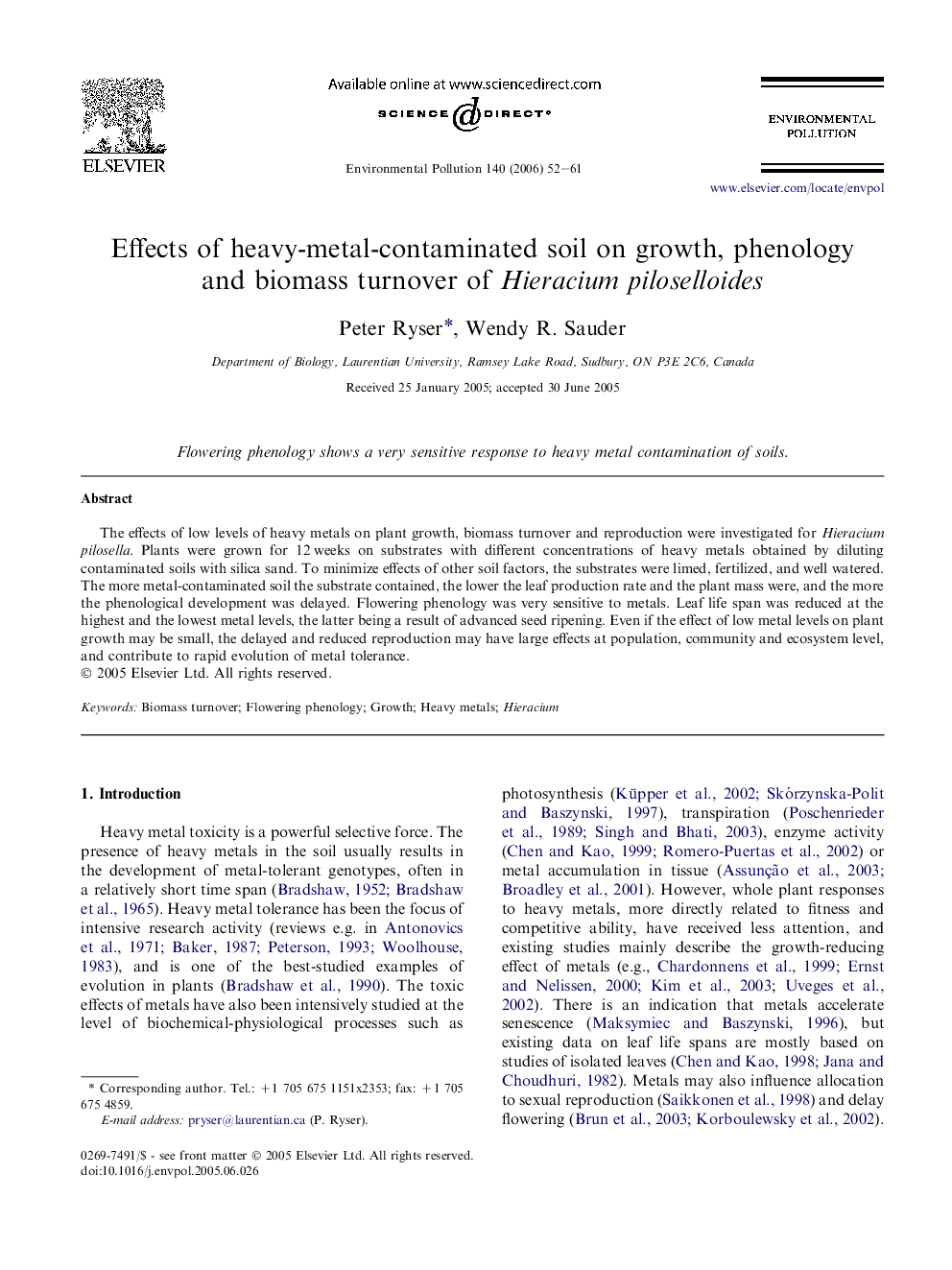| Article ID | Journal | Published Year | Pages | File Type |
|---|---|---|---|---|
| 4428031 | Environmental Pollution | 2006 | 10 Pages |
The effects of low levels of heavy metals on plant growth, biomass turnover and reproduction were investigated for Hieracium pilosella. Plants were grown for 12 weeks on substrates with different concentrations of heavy metals obtained by diluting contaminated soils with silica sand. To minimize effects of other soil factors, the substrates were limed, fertilized, and well watered. The more metal-contaminated soil the substrate contained, the lower the leaf production rate and the plant mass were, and the more the phenological development was delayed. Flowering phenology was very sensitive to metals. Leaf life span was reduced at the highest and the lowest metal levels, the latter being a result of advanced seed ripening. Even if the effect of low metal levels on plant growth may be small, the delayed and reduced reproduction may have large effects at population, community and ecosystem level, and contribute to rapid evolution of metal tolerance.
